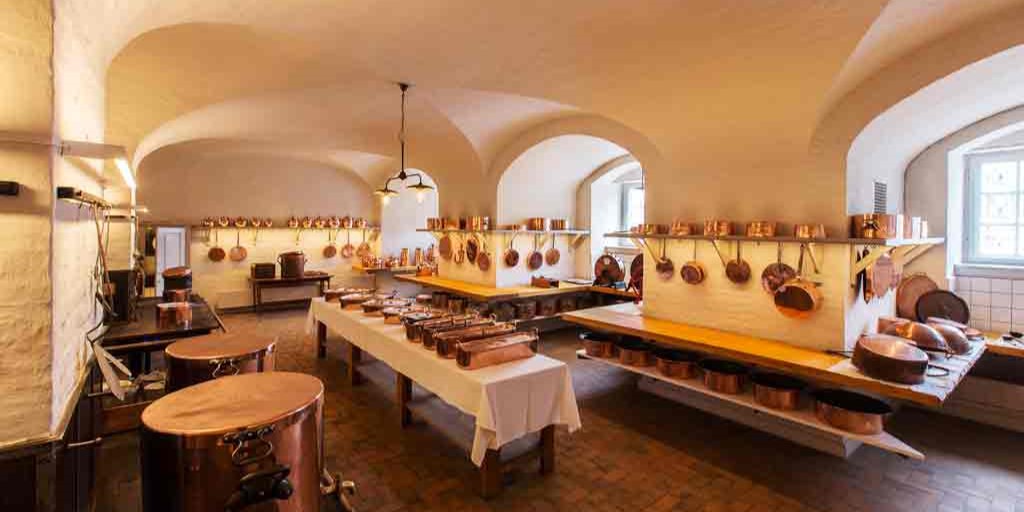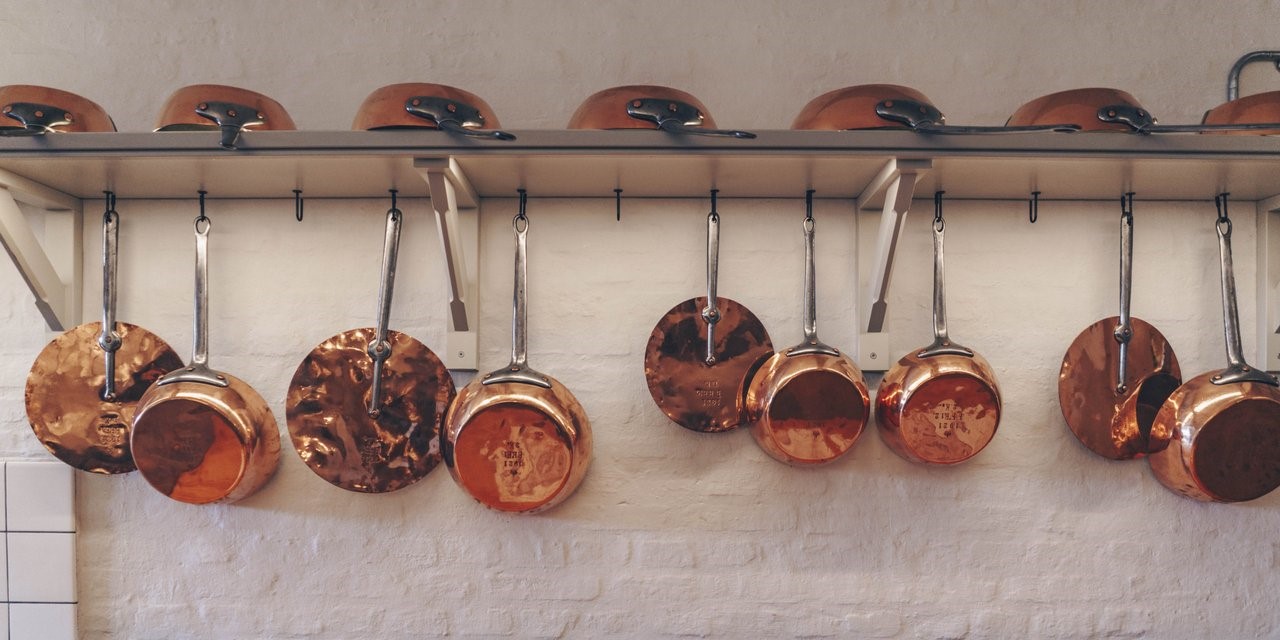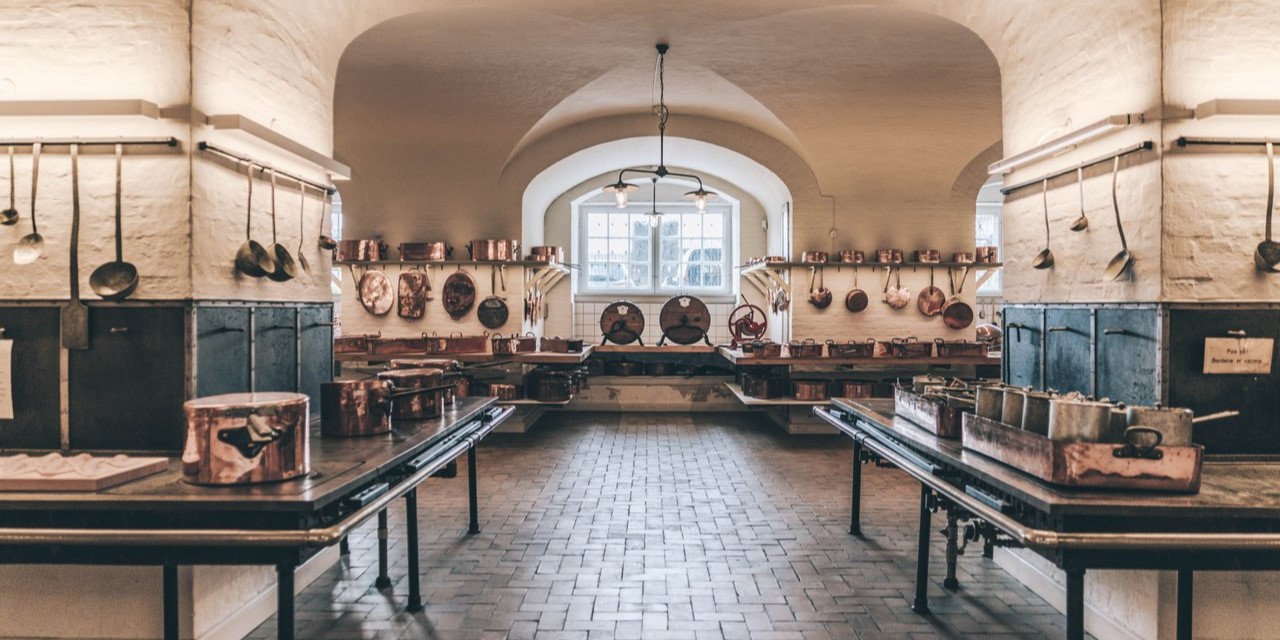
Photo: Daniel Ramussen

Photo: Daniel Ramussen

Photo: Visit Copenhagen

Photo: Visit Copenhagen

Photo: Visit Copenhagen

Photo: Visit Copenhagen
Christiansborg - The Royal Kitchen
Pay a visit to The Royal Kitchen under Christiansborg Palace.
This is where you can have a unique look behind the scenes of the royal parties and celebrations. What goes on in the royal kitchen when there is a gala dinner at the palace in 1937? The sweet aroma of beef tenderloin for 275 guests wafts out of the ovens - muscular chefs stagger around under the weight of the ton-heavy copper pots - the confectioner constructs exquisite crowns of candied fruit.
Come and experience the royal party preparations as they are today and in days of old.
The Royal Kitchen under Christiansborg Palace are closed from December 31, 2025, through January 8, 2026.
Related Attractions
Complete your visit to Amalienborg Palace square – step inside Amalienborg and experience royal life past and present. The Amalienborg Museum presents the private interiors of the most recent kings and queens and a treasury with world class jewellery.
Opening Hours: Plan your visit - The Amalienborg Museum (kongernessamling.dk)
The scope of the museum stretches back 150 years to Christian IX and Queen Louise, who were known as "the in-laws of Europe" because four of their children ascended to the thrones of England, Greece, Russia and Denmark respectively.
As in a journey through time the rooms of the royal couple and their descendants stand intact. Each reflects the modern taste of its period and the personalities of the kings and queens, whether it is in military, Victorian, or knightly style.One of the world’s most important collections of Russian jewellery can be enjoyed in the so-called Fabergé chamber. The collection came to Denmark mainly via empress Dagmar (Maria Fedodorovna), daughter of Christian IX and queen Louise.
On most days, there is admittance to the Gala Hall and the other magnificent rooms on the piano nobile. The royal reception rooms are still used by the royal family. Check opening hours of the piano nobile at amalienborg.dk.
Once home to kings and queens, Christiansborg Palace now houses the Royal Receptions Rooms, the Danish Parliament, the Supreme Court, and the Ministry of State. You can visit the royal rooms and walk in the footsteps of royalty. The Royal Reception Rooms at Christiansborg Palace in Copenhagen are used by the King for official occasions.
Walk though gilded rooms and decorated salons, some of which are still used by the Royal Family for various functions and events. The Royal Reception Rooms include The Tower Room and The Oval Throne Room where foreign ambassadors to Denmark are received by the King. The lavish Throne Room gives access to the balcony where the Danish monarchs are proclaimed, with twin thrones to admire.
The Great Hall is the most imposing room in the palace. This is where you will find the Queen's tapestries.The Danish business community marked the occasion of Queen Margrethe's 50th birthday in 1990 by ordering a gift of 17 tapestries. Bjørn Nørgaard painted the full-size sketches upon which the tapestries were woven. The tapestry series depicts 1000 years of Danish history.The Prime Minister of Denmark also use The Royal Reception Rooms in connection with state visits by foreign state leaders. The Great Hall is used for official dinners.If you hold a ticket to the Royal Reception Rooms, you are entitled to a free guided tour of the premises. Other experiences at Christiansborg Palace include a spooky tour of the ruins discovered underneath the palace, which include a wall dating to the Middle Ages, and a trip round the castle's former kitchens, complete with sounds and models.
The Reception Rooms are richly adorned with furniture and works of art rescued from the two previous palaces, as well as decorations by some of the best Danish artists, such as Nikolaj Abraham Abildgaard, Christoffer Wilhelm Eckersberg and Bjørn Nørgaard.
Admission during opening hours, provided that the royal family is not using the premises for official occasions. The Royal Reception Rooms are closed from December 31, 2025, through January 8, 2026.
When the present Christiansborg Palace in Copenhagen was constructed, the National Museum took care to excavate and protect the ruins of the Palace's oldest predecessors, Bishop Absalon's Castle of 1167 and Copenhagen Castle that replaced it. Christiansborg stands out as it houses both Denmark's current political center and the remnants of the country's main medieval castle, all under one roof.
Revealed by accident When casting the foundations of the present Christiansborg Palace, workers struck upon the ruins of older buildings and the remnants of a curtain wall. Experts were called in from the National Museum, and a close inspection revealed that the ruins dated back as far as 1167.What they had come upon was Bishop Absalon's Castle, once situated on a tiny island off the what is now known as Copenhagen. Walking around this underground site, you will get an idea of how the castle was continually renewed and developed.
The later castle and the infamous Blue Tower The Copenhagen Castle, built on the same site, was surrounded by a moat and had a large tower as an entrance gate. The castle was rebuilt several times. King Christian IV added a spire to the tower, the infamous Blue Tower, where only prominent prisoners of state were kept.In the 1720s, King Frederik IV entirely rebuilt the castle, but as a result of this total reconstruction, the walls had become so heavy they started to give way and to crack. King Christian VI, Frederik IV's successor, soon realised the necessity of demolishing the old castle and erecting a new one on the site. This new castle was to be the first Christiansborg Palace.The Ruins under Christiansborg are closed from December 31, 2025, through January 8, 2026.
The Royal Stables are located at Christiansborg Palace on the island of Slotsholmen in central Copenhagen. In 1789 the number of horses reached a peak with 270 horses stabled. Today, there are about 20 horses in the Royal Stables.
Shortly after his accession to the throne in 1730, King Christian VI had the old and outdated Copenhagen Castle torn down to make way for a new Baroque palace: the first Christiansborg Palace. The old stable complex behind Copenhagen Castle was also torn down to make way for a new and larger stable complex.
The new and still existing stable complex was constructed from 1738 to 1745. The complex included an outdoor riding ground surrounded by buildings containing an indoor riding school as well as stables with room for a total of 87 riding horses and 165 carriage horses. Part of these stable buildings still remain unchanged since their inauguration in 1746 with an extravagant decoration of marble pillars.
A lively museum
The museum has three departments: The Harness Room with old uniforms of the Royal Stables and the splendidly decorated eight-horse harness with a wealth of lovely details - the actual Stables with the Royal Family's carriage and saddle horses, and finally the carraige museum with old well-preserved state coaches and carriages.The Royal Stables are closed from December 31, 2025, through January 8, 2026.
Opening Hours
Temporarily closed09.01.2026 - 06.02.2026:
Monday: closed
Tuesday: 10:00 - 17:00
Wednesday: 10:00 - 17:00
Thursday: 10:00 - 17:00
Friday: 10:00 - 17:00
Saturday: 10:00 - 17:00
Sunday: 10:00 - 17:00
Location
Christiansborg Ridebane 27
1218 København K
Wheelchair Accessible





